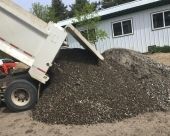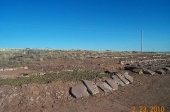I am used to thinking of and classifying soil as a grain size curve, or as percentages of different constituents: boulders, cobbles, gravel, sand, silt, clay. I might break those down into fine/medium/coarse. I can usually guess the grain size curve within 5-10% of the soil test results, so if I was to buy property, I would probably bring a shovel and check the soil. But I don't (other than not all gravel/rocks, and higher organic content is better),know what I should look for.
Obviously, higher organic matter (min 5-10+%) is key to good soil, as are healthy fungal life, etc. But I am curious about the non-soil portions.
Is there an "ideal" or several ideal mixtures of the non organic portions? Is a wide, distributed grain size curve (well graded/poorly sorted) soil best, or a poorly graded/well sorted -all one size- soil better or ....?
Typical/idealized curves-how I think of soil









